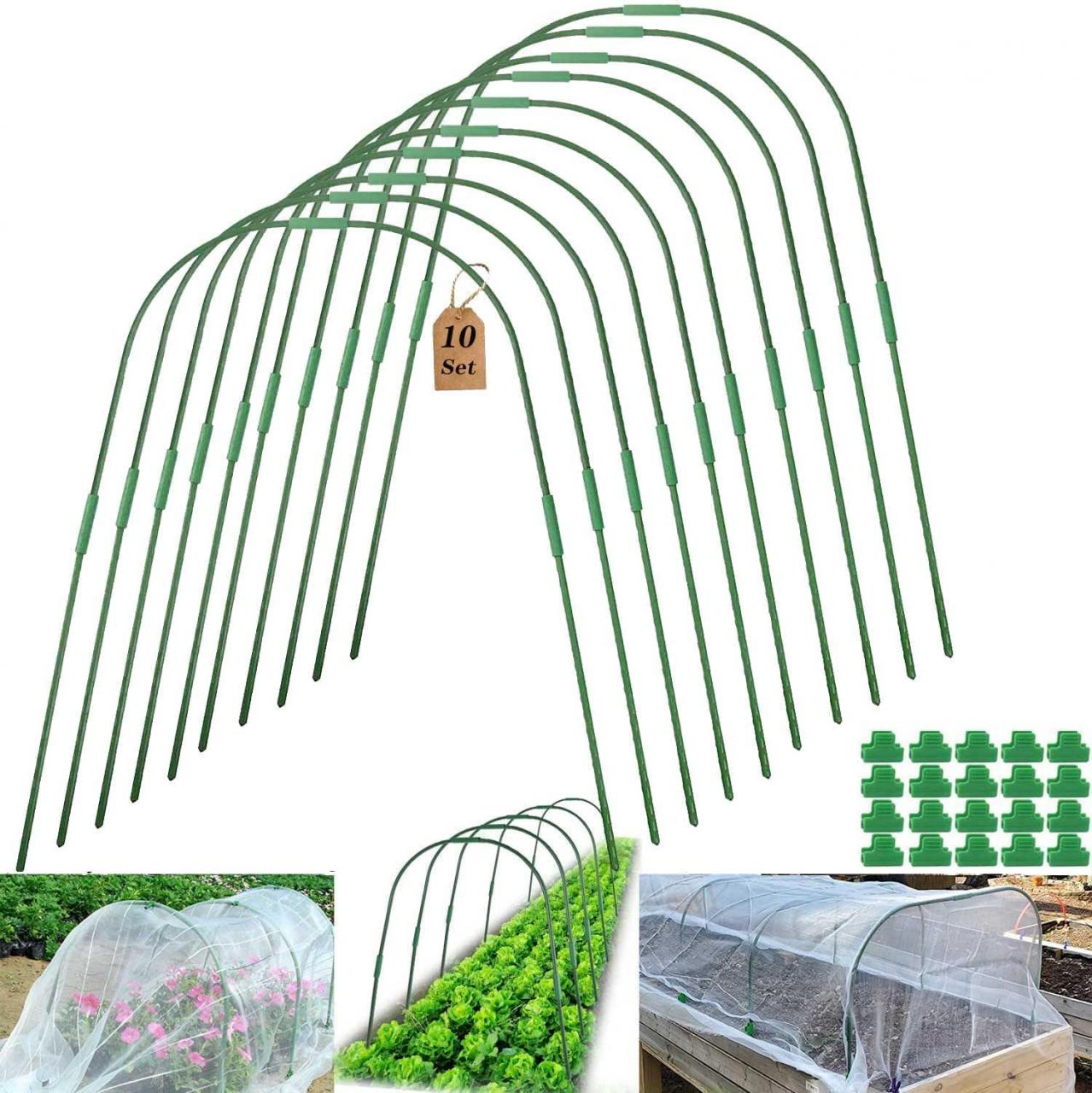Gardening enthusiasts are always looking for ways to extend the growing season and protect their plants from harsh weather conditions. Garden hoops for raised beds have become a popular solution, offering a simple and effective way to create a microclimate that supports plant growth. However, before investing in a garden hoop kit, it’s essential to weigh the pros and cons to ensure it aligns with your gardening needs. In this article, we’ll explore the advantages and disadvantages of garden hoops for raised beds, along with tips on how to choose the right kit for your garden.

Pros of Garden Hoops for Raised Beds
Garden hoops for raised beds offer several benefits that make them an attractive option for many gardeners:
Season Extension: By covering your raised beds with hoops and a protective layer, such as row cover fabric or plastic sheeting, you can create a microclimate that is warmer than the surrounding air. This allows you to start your plants earlier in the spring and extend the growing season into the fall, giving you a longer harvest period.
Frost Protection: Garden hoops provide a simple and effective way to protect your plants from frost and cold temperatures. By covering your beds with a frost blanket or plastic sheeting, you can create a barrier that traps heat and prevents damage to your plants
3
.
Pest Control: Garden hoops can be used to support bird netting or insect mesh, keeping pests like birds, rabbits, and insects away from your plants. This helps to reduce damage and improve the quality of your harvest.
Versatility: Garden hoop kits are designed to be easy to set up and take down, allowing you to use them as needed throughout the growing season. They can be used to cover individual raised beds or to create a larger tunnel for multiple beds.
Cons of Garden Hoops for Raised Beds
While garden hoops offer many benefits, there are also some potential drawbacks to consider:
Cost: Purchasing a garden hoop kit can be an investment, with prices ranging from affordable to more expensive, depending on the size and quality of the kit.
Maintenance: Garden hoops require some maintenance to ensure they remain in good condition. This may include tightening connections, replacing damaged parts, and keeping the covering material clean and in good repair
3
.
Limited Height: Garden hoops are typically designed to be low-profile, with a maximum height of around 3-4 feet. This means that they may not be suitable for taller plants or for creating a fully enclosed greenhouse environment
3
.
How to Choose the Right Garden Hoop Kit
When selecting a garden hoop kit for your raised beds, consider the following factors:
Size: Choose a kit that is appropriately sized for your raised beds, ensuring that the hoops are tall enough to accommodate your plants and that the spacing between hoops is suitable for the covering material you plan to use.
Material: Garden hoops are typically made from PVC, metal, or flexible plastic tubing. Consider the durability, weather resistance, and ease of installation of each material when making your choice
3
.
Covering Material: Decide on the type of covering material you want to use (e.g., row cover fabric, plastic sheeting, insect mesh) and choose a kit that is compatible with your preferred material.
Ease of Use: Look for a kit that is easy to set up and take down, with clear instructions and well-designed connectors and clips.
By weighing the pros and cons and considering your specific gardening needs, you can choose the right garden hoop kit to extend your growing season, protect your plants, and enjoy a bountiful harvest.